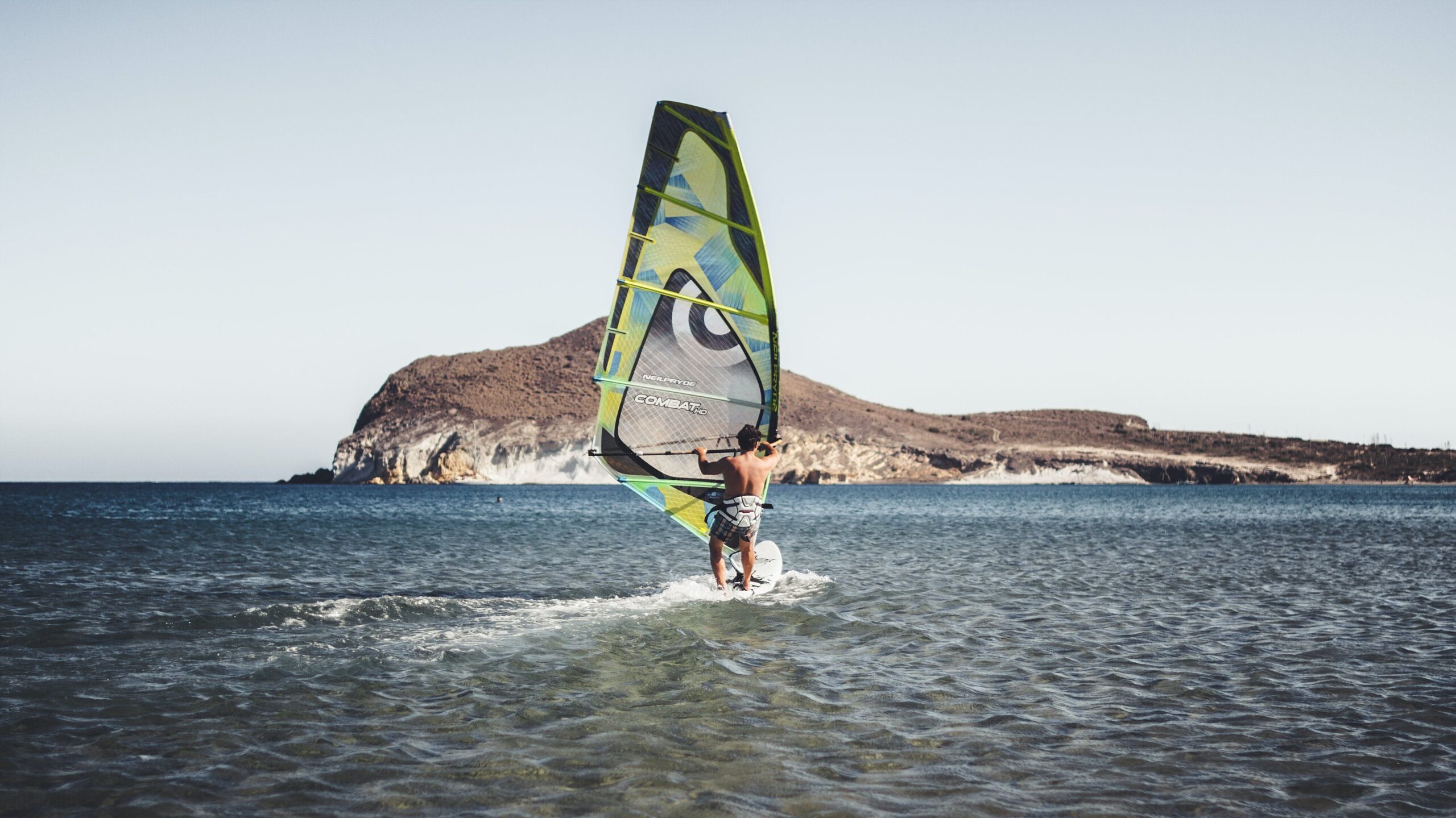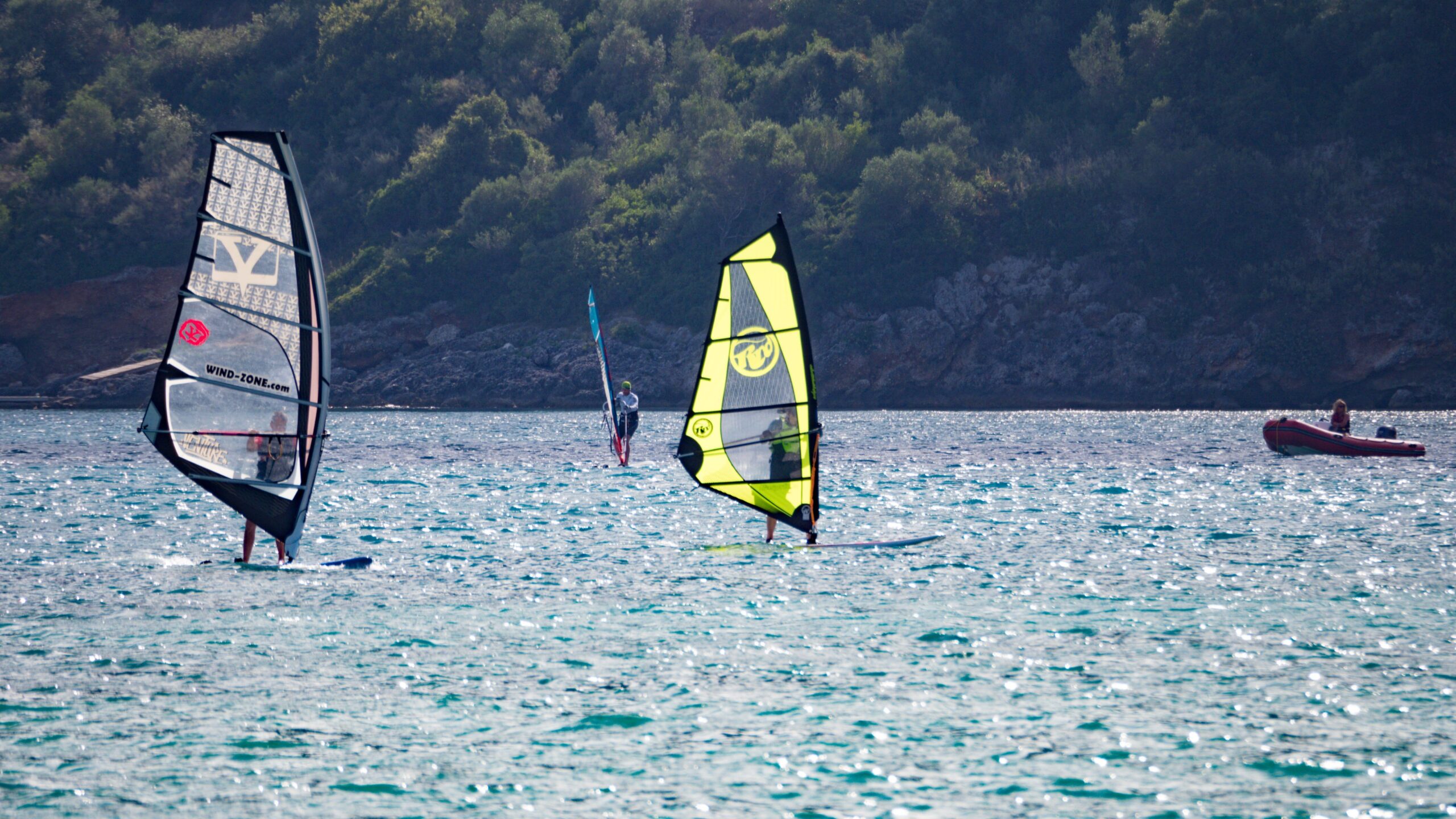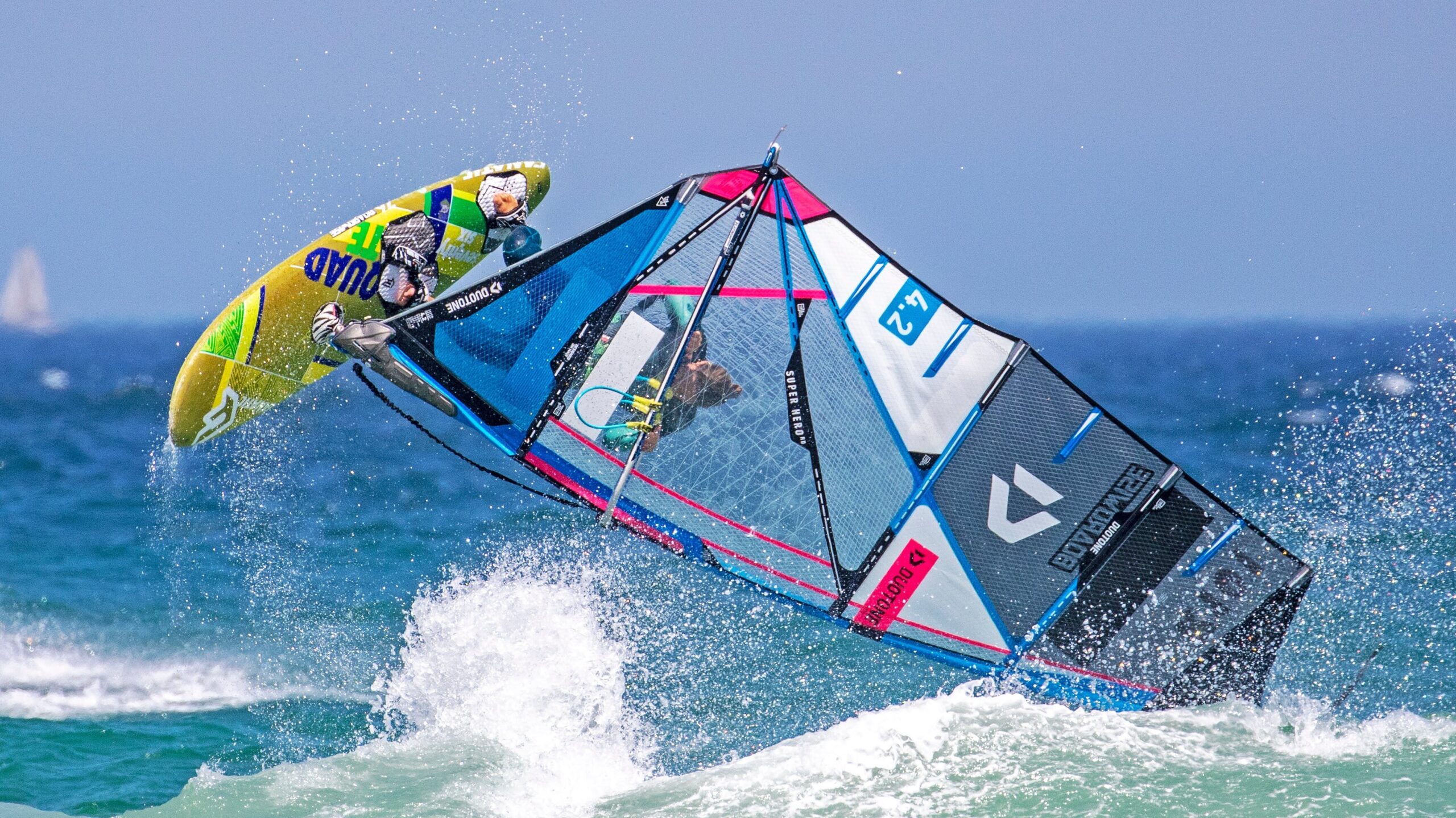
Table of Contents
Windsurfing, a thrilling watersport that combines elements of both sailing and surfing, is a mesmerizing dance with the wind and waves. Aspiring windsurfers are often captivated by the grace and freedom that this sport promises. However, the question that looms large for many is: Is windsurfing hard? The truth lies in the nuanced relationship between challenge and reward. In this article, we’ll explore the world of windsurfing, uncovering the hurdles that await and the immense joys that come with mastering the wind and waves.
I. Windsurfing Basics
Before we explore the question of whether windsurfing is hard, let’s navigate through the foundational aspects that form the backbone of this exhilarating water sport. Windsurfing, at its core, demands a delicate harmony between wind control, body movements, and board management. To unravel the mystery of windsurfing difficulty, we must first familiarize ourselves with the equipment and essential techniques that lay the groundwork for an enjoyable and successful journey on the water.
Mastering the Basics
Embarking on a windsurfing adventure requires a solid understanding of the basics, which serve as the crucial foundation for your exciting journey. These fundamental elements will not only equip you to navigate the challenges that windsurfing presents but will also pave the way for a thrilling and rewarding experience on the open water. As we unravel the intricacies of windsurfing, you’ll discover that mastering the basics is the key to unlocking the full potential of this dynamic and invigorating sport. To take your first steps in this thrilling sport, explore our comprehensive guide on: How to Windsurf?
II. Is windsurfing physically hard?
As you venture into the world of windsurfing, an immediate encounter awaits—the formidable physical demands of the sport. Windsurfing is not merely a ride on the waves; it’s a dynamic activity that engages a myriad of muscle groups, demanding a harmonious blend of strength and endurance. The core, back, and leg muscles take center stage in this aquatic performance, as windsurfers navigate the perpetual dance of adjusting their stance to maintain equilibrium and command over the board. In this section, we’ll explore the intricacies of the physical demands inherent to windsurfing, shedding light on the muscular symphony required to conquer the winds and waves.
Mental Challenges
Beyond its physical demands, windsurfing emerges as a captivating mental endeavor. In this section, we explore the psychological facets that define the sport, emphasizing the importance of focus, concentration, and fear management in the quest to conquer the wind and waves.
Windsurfing’s mental challenges become apparent early in the journey. The need for sustained focus is paramount, as windsurfers contend with the ever-changing wind conditions and the unpredictable nature of the water. This can be particularly daunting for beginners, requiring not only physical effort but also mental resilience.
However, as windsurfers accumulate experience, they develop a profound understanding of the intricate relationship between the mind and the elements. The sport demands mental agility in addition to physical prowess. Windsurfers must decipher the subtle cues of the wind, anticipate shifts, and adapt their strategies in real-time. This process creates a unique bond between the athlete and nature, fostering an exhilarating yet profound experience.
While the mental challenges of windsurfing may seem intimidating, they contribute to the allure of the sport. The constant interplay between the mind and the elements keeps enthusiasts returning to the water, seeking not only challenges but also the rich rewards that come with overcoming them. Windsurfing becomes a journey of self-discovery, where mental resilience and adaptability become as vital as the physical skills, creating a holistic and fulfilling experience on the open sea.

III. What Makes Windsurfing Hard?
Embarking on the windsurfing journey promises an exciting fusion of wind, waves, and the open sea. However, the thrill comes hand in hand with its fair share of challenges, making windsurfing a sport that demands dedication and perseverance. Here’s a closer look at the factors that contribute to the inherent difficulty of windsurfing:
1. Balance and Coordination
Achieving harmony between the wind, the board, and body movements is a delicate dance. Windsurfing necessitates maintaining equilibrium on the board while simultaneously adjusting to the unpredictable shifts in wind conditions. This demands not only physical balance but also a finely tuned sense of coordination, where split-second decisions can impact the entire experience.
2. Technical Complexity
Mastering the technical aspects of windsurfing involves a multifaceted skill set. Controlling the sail is not just a matter of harnessing the wind’s power; it’s about doing so effectively and efficiently. Executing maneuvers requires not only physical dexterity but also mental acuity. Windsurfing becomes a mental chess match, where the mastery of intricate techniques is key to navigating the open water successfully.
3. Environmental Variables
Windsurfing’s reliance on nature introduces an element of unpredictability. Wind patterns, water conditions, and tidal influences are ever-changing, making each session a unique challenge. Adapting to these environmental variables requires quick thinking and a deep understanding of the forces at play. Successful windsurfing involves reading the elements and making on-the-fly adjustments to navigate the ever-shifting conditions.
4. Equipment Management
Learning to handle windsurfing equipment is a skill that evolves over time. It’s not just about manipulating the sail to catch the wind optimally; it’s about understanding the nuances of controlling the board’s movements. Making split-second decisions about equipment adjustments in response to changing conditions adds to the complexity. This requires a blend of muscle memory and strategic thinking, where the windsurfer becomes intimately connected with their gear.
5. Fear Factor
Overcoming the fear of falling or facing unexpected challenges in open water is a psychological hurdle in windsurfing. Building confidence and mental resilience is as crucial as mastering the physical aspects. Navigating the fear factor is an integral part of the windsurfing learning curve. Confronting and overcoming anxieties associated with the sport is a journey within itself, shaping not only one’s windsurfing prowess but also their mental fortitude.
In essence, windsurfing goes beyond being a physical activity; it’s a holistic experience that challenges the mind, body, and spirit. Understanding and embracing these challenges are integral to the journey of becoming a proficient windsurfer.
IV. Tips To Make Windsurfing Easier
Windsurfing, while exhilarating, can be perceived as challenging for beginners. However, with strategic approaches and a focus on skill development, you can make your windsurfing experience more accessible and enjoyable. Here are practical tips to navigate the learning curve and enhance your windsurfing journey:
1. Seek Professional Guidance
Start your windsurfing adventure by enrolling in professional lessons. Experienced instructors provide valuable insights, ensuring you build a strong foundation and learn essential techniques efficiently.
2. Choose Beginner-Friendly Equipment
Selecting the right equipment is pivotal. Opt for larger boards and smaller sails initially to enhance stability. As your skills progress, you can gradually transition to more advanced gear.
3. Enhance Your Balance
Strengthen your balance through targeted exercises such as yoga and core workouts. A solid foundation in balance improves your stability on the board, making windsurfing maneuvers more manageable.
4. Stay Weather-Aware
Understanding wind patterns and water conditions is crucial. Stay informed about weather forecasts and develop the ability to choose optimal days for practice. This awareness allows you to adapt to changing conditions effectively.
5. Progress Gradually
Take a step-by-step approach to skill progression. Begin with fundamental techniques and gradually introduce more advanced maneuvers as you gain confidence. This gradual progression minimizes frustration and enhances skill retention.
6. Consistent Practice Pays Off
Dedicate consistent time to practice windsurfing. Regular practice not only improves muscle memory but also builds the skills necessary to navigate the challenges of windsurfing more effectively.
7. Relaxation and Flexibility Matter
Stay relaxed during your windsurfing sessions, especially in your shoulders and arms. Flexibility is key for adjusting to varying wind and wave conditions. Cultivating a relaxed and flexible approach contributes to a smoother experience on the water.
8. Embrace Learning from Experience
Mistakes are part of the learning process. Embrace them as opportunities to learn and refine your skills. Analyze what went wrong, make adjustments, and use each experience to grow as a windsurfer.
By incorporating these tips into your windsurfing routine, you can simplify the learning process and make windsurfing more accessible. Remember, a patient and persistent approach goes a long way in mastering this exciting water sport.
V. Learning Curve Windsurfing
Embarking on the windsurfing journey entails navigating a well-defined learning curve, marked by distinct milestones and progressions. This section provides a comprehensive insight into the key stages of development, offering a realistic timeline for those venturing into the dynamic realm of windsurfing.
Initial Days
During the initial days of windsurfing, beginners lay the groundwork for their skills. This phase involves understanding the intricacies of the equipment, mastering basic maneuvers, and gaining a foundational grasp of wind dynamics. Each day serves as a voyage of discovery, unveiling the fundamental aspects that define the sport.
After One Week
As the first week unfolds, windsurfers experience a tangible improvement in their abilities. Confidence grows as individuals become more adept at balancing on the board, manipulating the sail, and navigating through the water. This period signifies a pivotal shift from introductory lessons to a more self-assured and proficient approach to windsurfing.
Beyond Two Weeks
Moving past the initial learning phase, windsurfers enter a stage of refinement. Here, they hone their techniques, focus on advanced maneuvers, and develop a profound understanding of the nuanced interplay between wind and board. The learning curve becomes less steep, allowing individuals to revel in a more fluid and controlled windsurfing experience.
By delineating the learning curve into these specific timeframes, aspiring windsurfers can set realistic expectations and acknowledge their progress. The journey to mastering windsurfing is not just about reaching a destination but embracing the continuous learning process that enhances the joy of gliding over the water.

VI. Conclusion
Embarking on the windsurfing odyssey unveils a thrilling journey marked by challenges, triumphs, and a profound connection with the elements. Having explored the basics, delved into the physical and mental demands, deciphered weather nuances, and traversed the learning curve, the resurfacing question lingers: Is windsurfing hard?
The truth, akin to the dance between wind and waves, lies in the nuanced interplay of challenge and reward. Windsurfing requires physical prowess, mental resilience, and adaptability to ever-changing conditions. The steep learning curve transforms setbacks into stepping stones toward mastery.
The allure of windsurfing resides not just in conquering challenges but in the rich rewards that follow. It’s a journey of self-discovery, where the mind and body synchronize with the elements. Every gust of wind becomes a lesson, every wave a teacher. Though daunting at times, the learning process forges a profound connection with the sea.
Is Windsurfing Hard?
So, is windsurfing hard? Yes, it challenges limits. Yet, in embracing these challenges, the true magic unfolds. The joy of riding wind and waves, the satisfaction of mastering a complex skill, and the intimate dance with nature make windsurfing an immensely gratifying experience. As the windsurfing sails catch the breeze and the board glides over the water, the answer to whether it’s hard becomes secondary to the exhilaration of the journey itself. Dare to venture into the windsurfing realm, where challenges are opportunities, and every session promises not just growth but a symphony of joy on the open sea.
